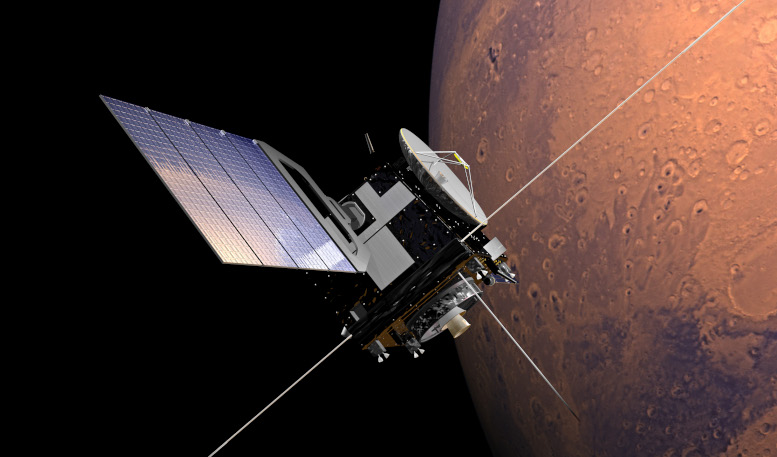When methane (CH4) was discovered in Mars’ atmosphere over a decade ago, the idea that life might be present on the Red Planet became a tantalising idea and searches began in earnest to narrow down the source of this hydro-carbon molecule.
However despite various detections reported by different experiments, a consensus as to whether methane had really been conclusively discovered, let alone what might be the cause of it, has never been agreed upon. Now though, an international team of astronomers has made an unequivocal detection of methane and they might even know where it came from.
Methane nowadays is produced in abundance on this planet by the many living creatures that expel it as part of their daily digestion routine. It is also found in vast quantities underground made from decomposing plant and animal matter that has been exposed to intense heat and pressure under the surface of the Earth over millions of years. In a similar yet not so lovely manner it also gets produced in landfill areas as things start to decay.
On Mars, given how barren the planet’s surface is now, finding methane could indicate that the Martian surface was once a very green and luscious land, filled with swamps and foliage and perhaps even life bigger than the size of bacteria. No one thinks it's because of the trash that martians have buried anyway.
So, when the Curiosity rover detected a small burst of methane at a particular location within Gale Crater - a clay-laden depression suspected of being formed by flowing water – hopes of compressed ancient wetlands rose to the forefront as a possible source for the gas. But even this ‘discovery’ was questioned, and some said it was merely Curiosity itself that was responsible for making the gas. And when the European Space Agency’s Trace Gas Orbiter (TGO), which arrived at Mars in 2016, could find no trace of it, the rovers methane moment of fame started to look frustratingly like a mistake.
A mistake it was not, as another team of scientists using data from Mars Express has just reported a firm detection of methane in the Martian atmosphere above Gale Crater one day after the in situ observation of a methane spike by the Curiosity rover.
The detection was made by the spacecraft’s Planetary Fourier Spectrometer (PFS) and the team, who is is headed by Marco Giuranna, a planetary scientist at the Institute for Space Astrophysics and Planetology (IAPS) in Rome, say that by implementing improved observational geometry, as well as more sophisticated data treatment and analysis, the detection is a robust and genuine one.
The quantities found are still minute – around 15.5±2.5 ppb by volume (ppbv), where ppb stands for parts per billion! In comparison, Earth’s atmosphere has about 1,800 parts per billion.
As tiny as it is, the team’s detection still improves upon that found by Curiosity, which was around 6 to 7 ppb - so double this amount.
Does this mean Mars is filled with methane-spewing microbes? Methane can also be formed via abiotic processes, therefore the presence of organic matter or microorganisms are not needed to produce it.
Giuranna and team say that the possible source location for this burst is along a fault line in the bed rock which lies between a region known as Aeolis Mensae on one side and the Medusae Fossae Formation on the other.
Under this area lies shallow layers of permafrost and the team suspect that the gas is released episodically along the fault as the ice either partially melts or escapes due to gas pressure build-up.
Coupled with Giuranna and team specifying that this detection was the only one and that no other methane discharges were recorded in any other orbital passages made by Mars Express, it would seem unlikely that a swarth of tiny organisms are pumping out the gas. If this was the case then a steady-stream of the vapour would have been recorded.
Nonetheless, the jury is still out and this first independent confirmation of methane detection on Mars, might change the view of its occurrence on the Red Planet, say the authors in their recently published Nature Geoscience paper. “Rather than by large emissions and a global presence, our data suggest that the presence of methane on Mars might be characterised by small, short emissions and transient events.”
Only more data will be able to ultimately shed light on the origin of the detected Martian methane, so the PFS instrument is set to continue monitoring Mars' atmosphere. Meanwhile, the ExoMars Trace Gas Orbiter will also continue its search for the molecule from high above in Mars’ orbit, and coordinated observations with PFS are being planned.











